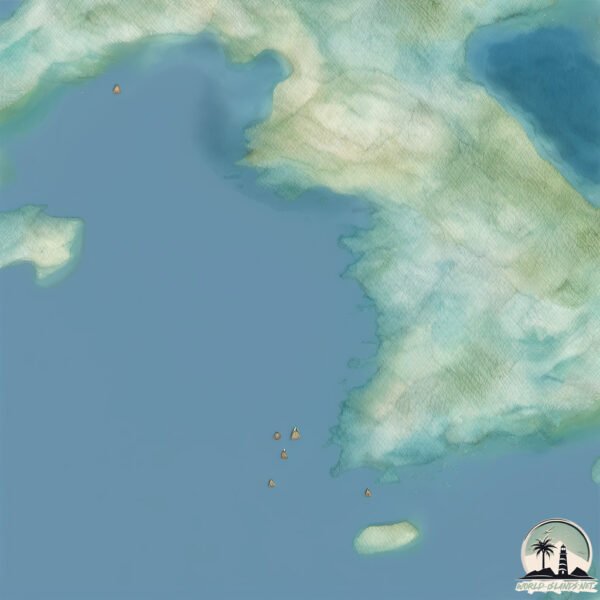Ch’o-do

Welcome to Ch’o-do, a Continental island in the Yellow Sea, part of the majestic Pacific Ocean. This guide offers a comprehensive overview of what makes Ch’o-do unique – from its geography and climate to its population, infrastructure, and beyond. Dive into the details:
- Geography and Size: Explore the island’s size and location.
- Climate and Weather: Weather patterns and temperature.
- Topography and Nature: Uncover the natural wonders of the island.
- Infrastructure and Travelling: Insights on reaching, staying, and making the most of your visit.
- News and Headlines: Latest News.
Geography and size of Ch’o-do
Size: 32.7 km²
Coastline: 56.1 km
Ocean: Pacific Ocean
Sea: Yellow Sea
Continent: Asia
Ch’o-do is a Medium Island spanning 33 km² with a coastline of 56 km.
Archipel: –
Tectonic Plate: Eurasia – One of the world’s largest tectonic plates, the Eurasian Plate covers a significant portion of Europe and Asia. It’s characterized by diverse geological features, including the Ural Mountains, the European Plain, and the Himalayas formed from its collision with the Indian Plate.
The geographic heart of the island is pinpointed at these coordinates:
Latitude: 38.52732944 / Longitude: 124.8384582
Climate and weather of Ch’o-do
Climate Zone: Continental
Climate Details: Monsoon-Influenced Hot-Summer Humid Continental Climate
Temperature: Hot Summer
Climate Characteristics: Hot summers with monsoon rains, contrasting with dry, cold winters. Typical of east Asian continental edges.
Topography and nature of Ch’o-do
Timezone: UTC+09:00
Timezone places: Asia/Tokyo
Max. Elevation: 215 m
Mean Elevation: 69 m
Vegetation: Open Woodland
Tree Coverage: 53%
The mean elevation is 69 m. The highest elevation on the island reaches approximately 215 meters above sea level. The island is characterized by Hills: Gently sloping landforms with rounded tops, having a maximum elevation between 200 and 500 meters. Hills contribute to a varied landscape on islands.
Dominating Vegetation: Open Woodland
Characterized by sparsely distributed trees with open canopy allowing sunlight to penetrate, supporting grasses and shrubs underneath. Often found in drier or transitional environments. Ch’o-do has a tree cover of 53 %.
Vegetation: 12 vegetation zones – Exceptionally Diverse Island
Islands with more than ten vegetation zones are among the most ecologically rich and varied in the world. These islands are akin to miniature continents, boasting an incredible array of ecosystems. The sheer range of habitats, from high peaks to deep valleys, rainforests to deserts, creates a mosaic of life that is unparalleled. They are crucial for conservation and ecological studies.
Infrastructure and Travelling to Ch’o-do
Does the island have a public airport? no.
There is no public and scheduled airport on Ch’o-do. The nearest airport is Jeju International Airport, located 87 km away.
Does the island have a major port? no.
There are no major ports on Ch’o-do. The closest major port is NAMPO, approximately 61 km away.
The mean population of Ch’o-do is 286 per km². Ch’o-do is Moderately Inhabited. The island belongs to North Korea.
Continuing your journey, Hajo-do is the next notable island, situated merely km away.
North Korea is classified as Least developed region: Countries that exhibit the lowest indicators of socioeconomic development, with the lowest Human Development Index ratings. The level of income is Low income.
News – Latest Updates and Headlines from Ch’o-do
Stay informed with the most recent news and important headlines from Ch’o-do. Here’s a roundup of the latest developments.
Please note: The data used here has been primarily extracted from satellite readings. Deviations from exact values may occur, particularly regarding the height of elevations and population density. Land area and coastline measurements refer to average values at mean high tide.
